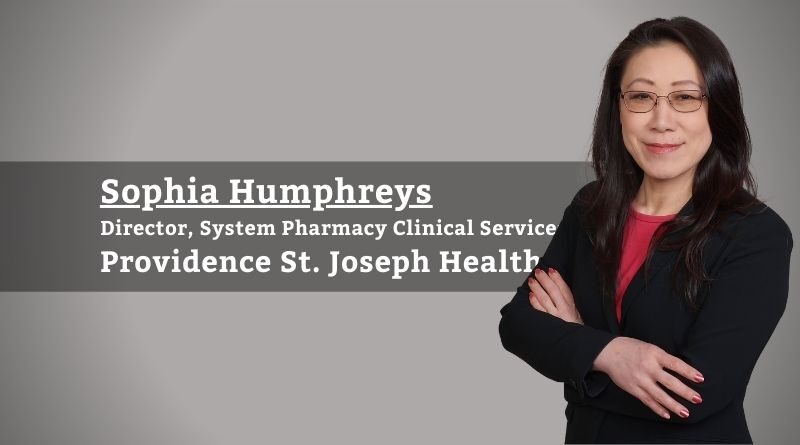Data-Driven Medication Utilization Management Tools to Reduce Drug Cost
By Sophia Humphreys, Director, System Pharmacy Clinical Services, Providence St. Joseph Health
Covid-19 has financially devastated the healthcare industry, causing an estimated $323 billion in losses for 2020, according to the American Hospital Association. Rising drug costs are a key contributor to this financial crisis.
(1). Increases in the costs of drugs have been a challenge for many years. Prescription medication spends exceeded $344 Billion in 2018, a 30% increase compared to 2013. The 2018 rate hike was largely due to price increases rather than volume change.
(2). According to the IQVIA Institute, new specialty medications are among the primary drivers for the rising drug costs. Most of these high-cost specialty medications are biologics.
(3). In 2019, approximately 43% of all drug spending in the US was for biological drugs, which equaled $211 billion.
(4). Thus, strategies to reduce drug costs, especially specialty biologics, will increase health system sustainability.
Providence is the third largest non-profit health system in the US that operates 51 hospitals, 1,085 clinics, and a wide range of healthcare service facilities. Our annual drug spend exceeds 1.2 billion dollars. As with most large Integrated Delivery Networks (IDN), medication utilization management (MUM) involves numerous complexities. Regional practices, payer coverage, physician prescribing habits, and patient preferences for specialty medications vary significantly, posing difficulties for MUM standardization. In addition, Providence purchases medications from numerous vendors and has thousands of different contracts active at any given time. The multiple procurement sources and reporting systems for drug spend adds more complexity.
In response to these challenges, the pharmacy division at Providence developed an innovative, multidisciplinary MUM program to control drug costs. This program has saved more than $20 million annually over the past two years.
An efficient, reliable, and integrated data reporting system can help pharmacy leaders to identify, develop, implement, and evaluate efficient MUM initiatives.
One of the keys to that success was the innovative application of data by the pharmacy team. The complex structure of a large IDN and the use of multiple electronic medical record systems presents numerous difficulties for comprehensive pharmacoeconomic analysis. The Providence IT team provided the pharmacy division access to fast, efficient, and reliable drug spend trends, and utilization pattern changes from multiplatform data sources. Real-time analysis and reports enabled us to identify the different prescribing patterns, spend changes, and payer coverage variations. The agility of data reporting allowed us to adjust MUM strategies in real-time as the market changed. They also helped us to respond quickly to urgent needs, such as COVID-19 essential medications.
The designs for MUM cost-saving initiatives were based on real-time clinical and financial data. These tools provided the support pharmacy leaders needed to make evidence-based, data-driven decisions. For example, all medications purchased by Providence facilities were integrated and built into one dashboard for easy and reliable information-sharing, regardless of vendor. Pharmacy leaders could easily obtain purchase patterns, volume changes, price variances, and other relevant information regarding drug purchase and utilization with these tools. This allowed us to design the MUM cost-saving initiatives based on the specific needs of each specialty and/or region.
The system pharmacy team and data engineers also built utilization reporting tools regarding patient insurance, specialty medication prescribing patterns, and facility and department utilization changes. The level of detail in these reports can start at an organization-wide level and focus down to a specific physician’s prescribing of a single medication. These tools guided MUM strategies and revealed prescribing habits, unique payer coverage issues, high-cost medication utilization patterns and helped us evaluate performance differences among regions, facilities, and specialties.
Data-driven analysis can make MUM more targeted and effective. Historically, 20% of the medications prescribed usually cost 80% of the entire drug budget. However, our initial pharmacoeconomic analysis revealed a new story. Of the thousands of medications Providence purchases annually, the top 20 drugs accounted for more than 40% of the entire drug budget, and all 20 were biologics. Therefore, a great deal of the MUM effort was focused on finding lower-cost alternatives for these expensive biologics.
For chemical medications, generic products have offered a lower-cost alternative. Unfortunately, there are no generics for biologics. However, there are biosimilar products. Biosimilar medications are highly similar to the brand name biologics in efficacy and safety and cost far less. We used the spend and utilization analytical tools to evaluate the cost savings for each MUM initiative, identify improvement opportunities, and uncover reimbursement variances among different regions, payers, and different medications. All of these helped us design the most effective and efficient MUM initiatives to promote biosimilar adoption. This program saved Providence approximately $27 million in the past two years.
Utilization analysis tools are vitally important to our work. Here is one example. These tools helped us to identify unique prescribing patterns among local physician groups. The tools guided us to physician advocates for MUM initiatives in each specialty. These physicians conducted peer-to-peer education, shared success stories, and acted as our MUM program ambassadors. They improved physician acceptance, initiatives’ performance, and increased overall MUM savings.
An efficient, reliable, and integrated data reporting system can help pharmacy leaders to identify, develop, implement, and evaluate efficient MUM initiatives. Since early 2019, we have implemented more than forty MUM initiatives. These have saved Providence more than $20 Million annually. Quarter 1 of 2021 reported almost $7 million savings from MUM initiatives. In addition to these savings, the MUM programs have been used to improve patient outcomes, quicken post-COVID-19 financial recovery, and improve overall sustainability for Providence.



